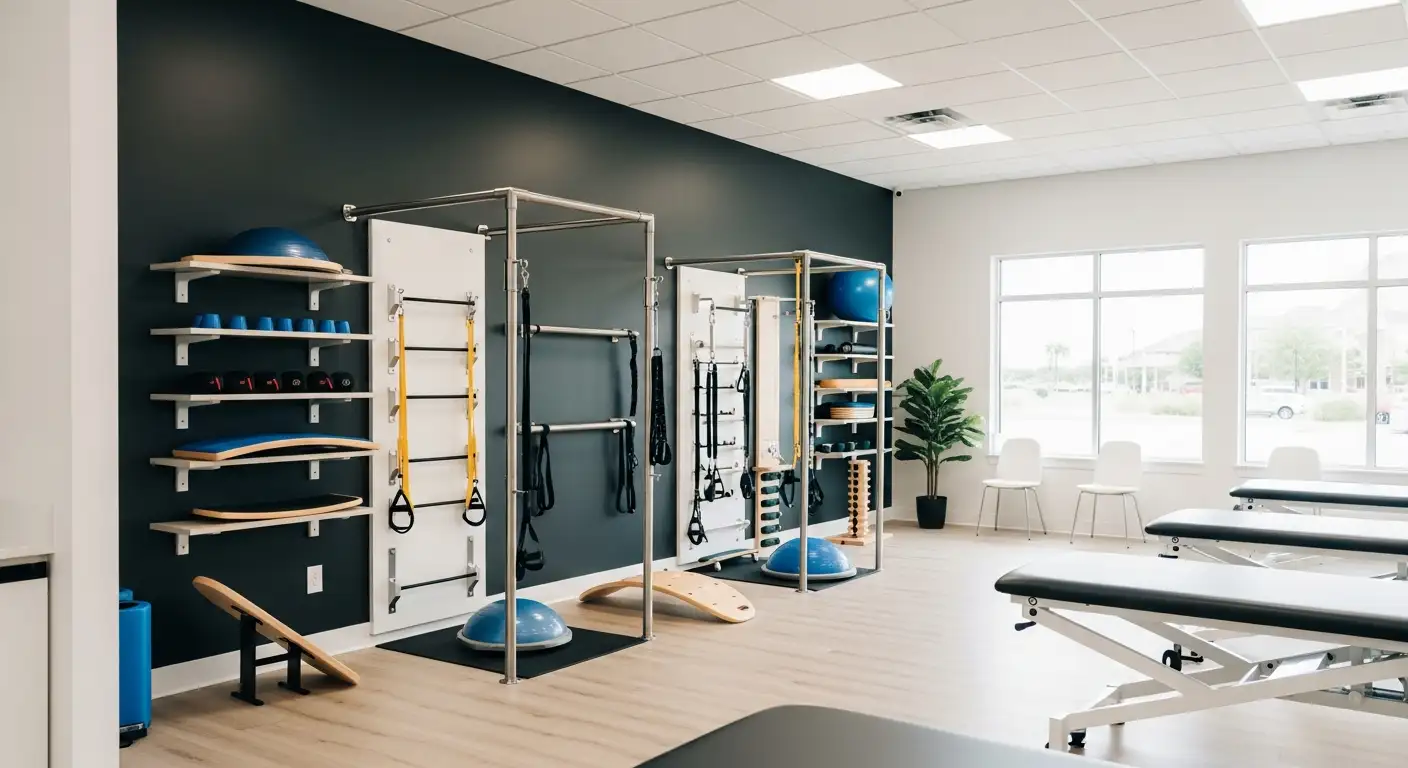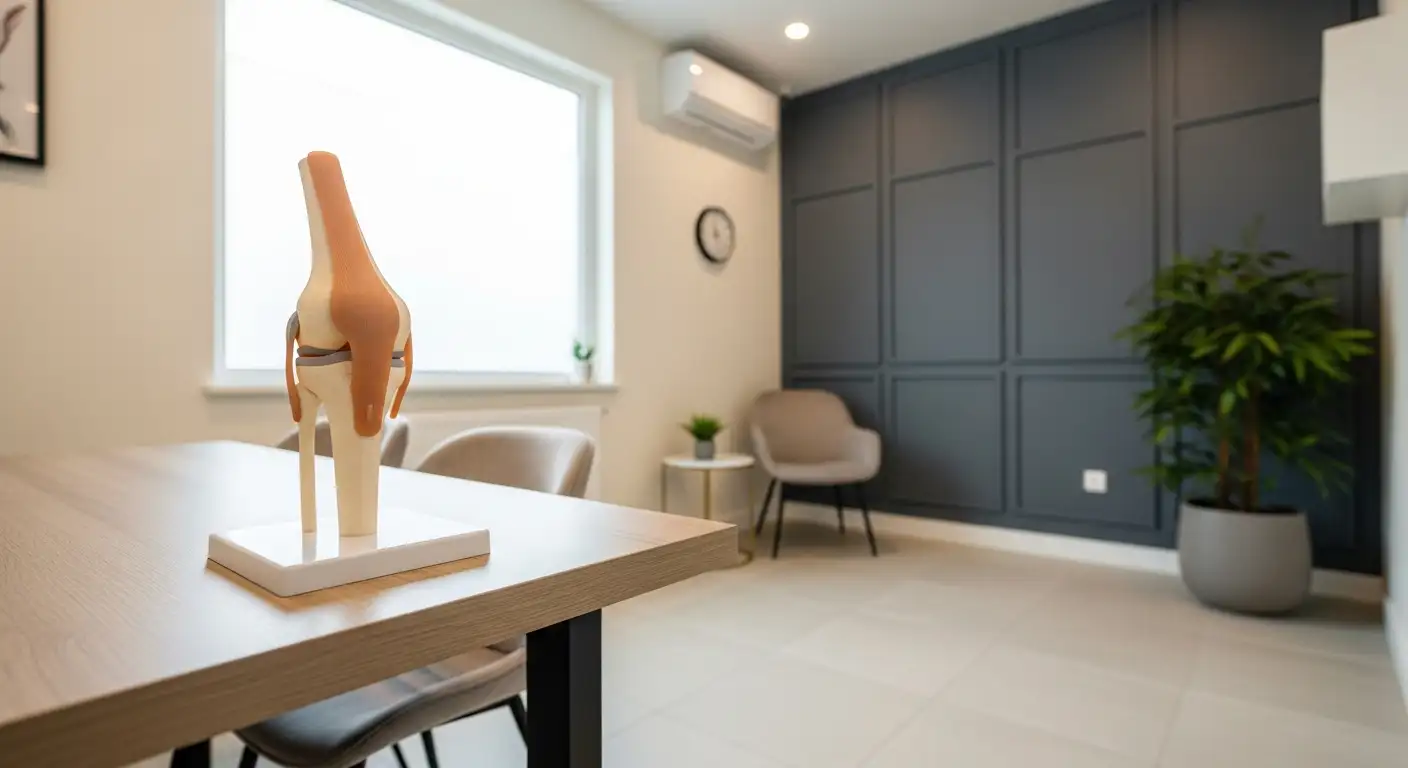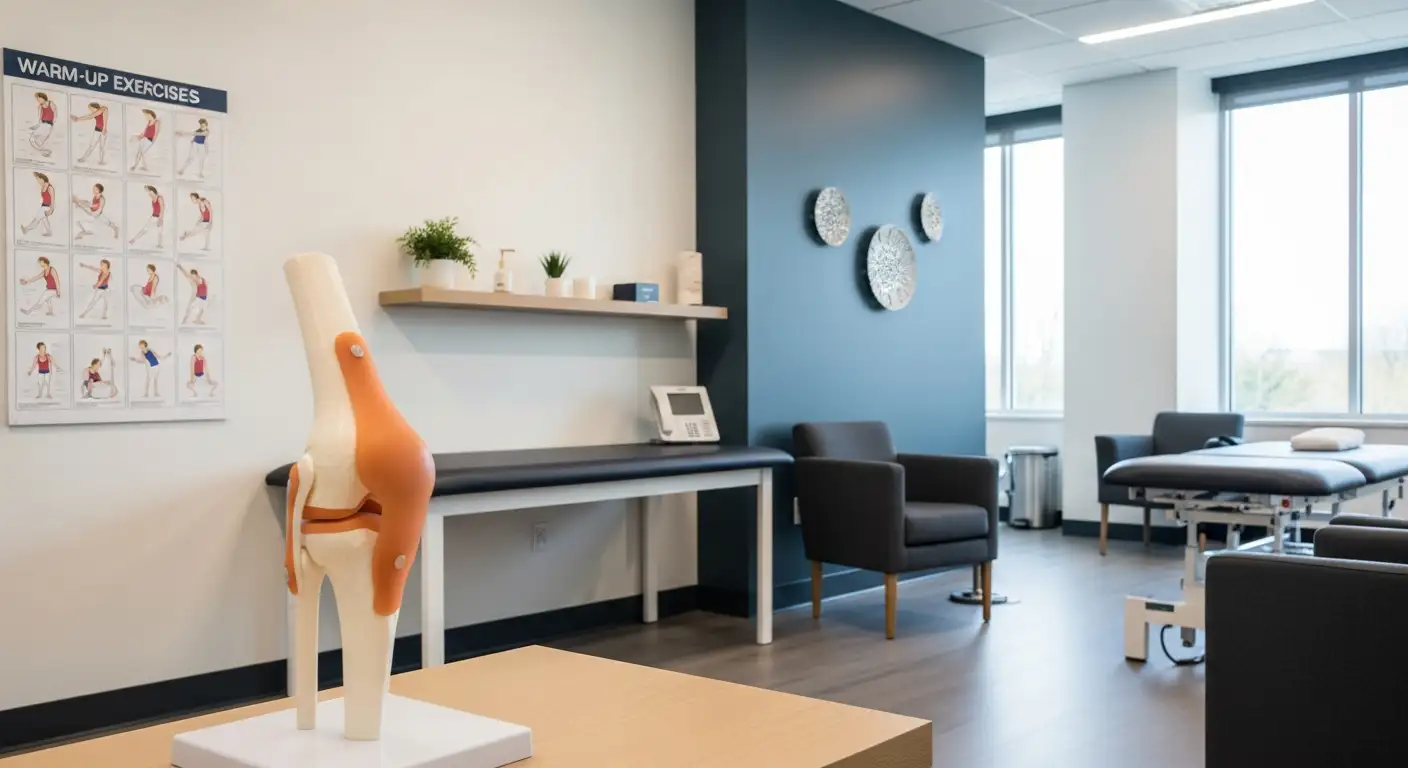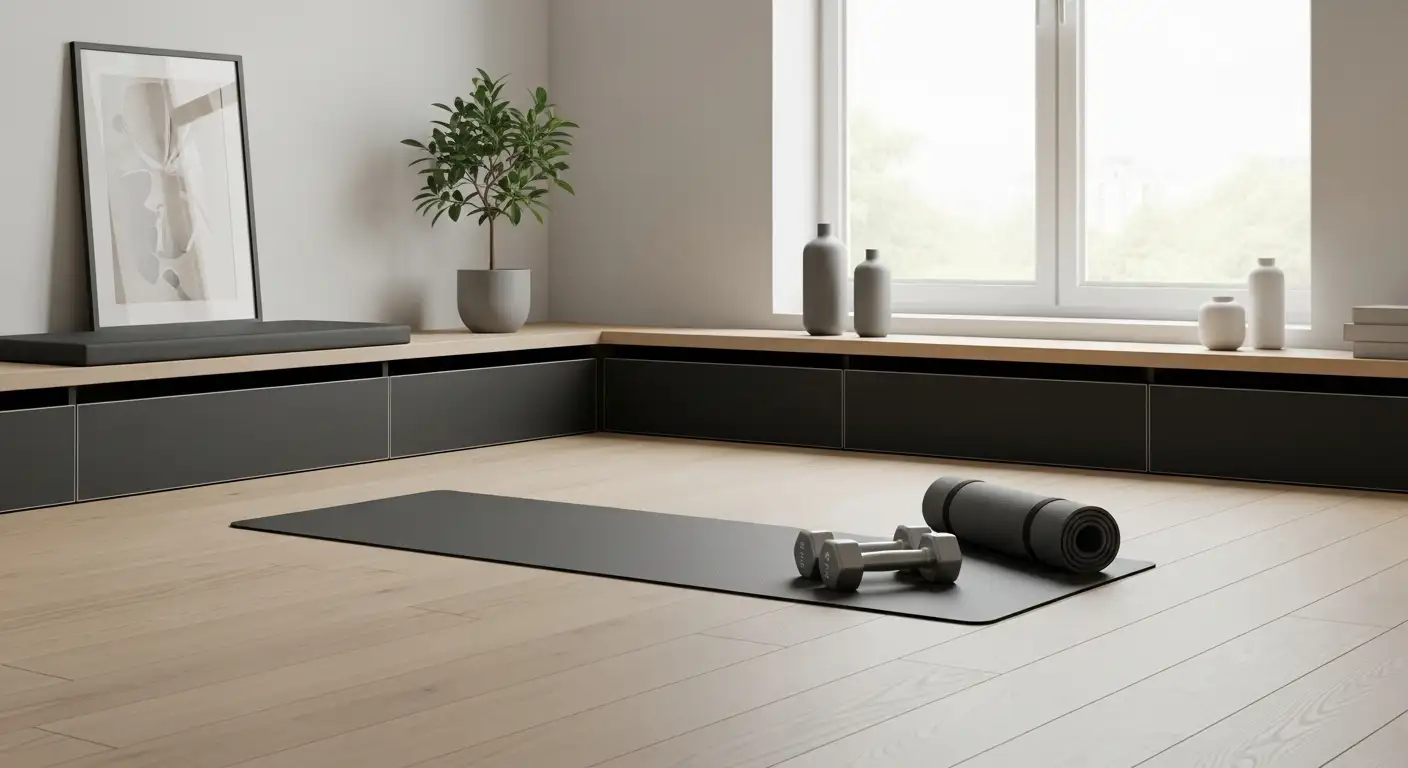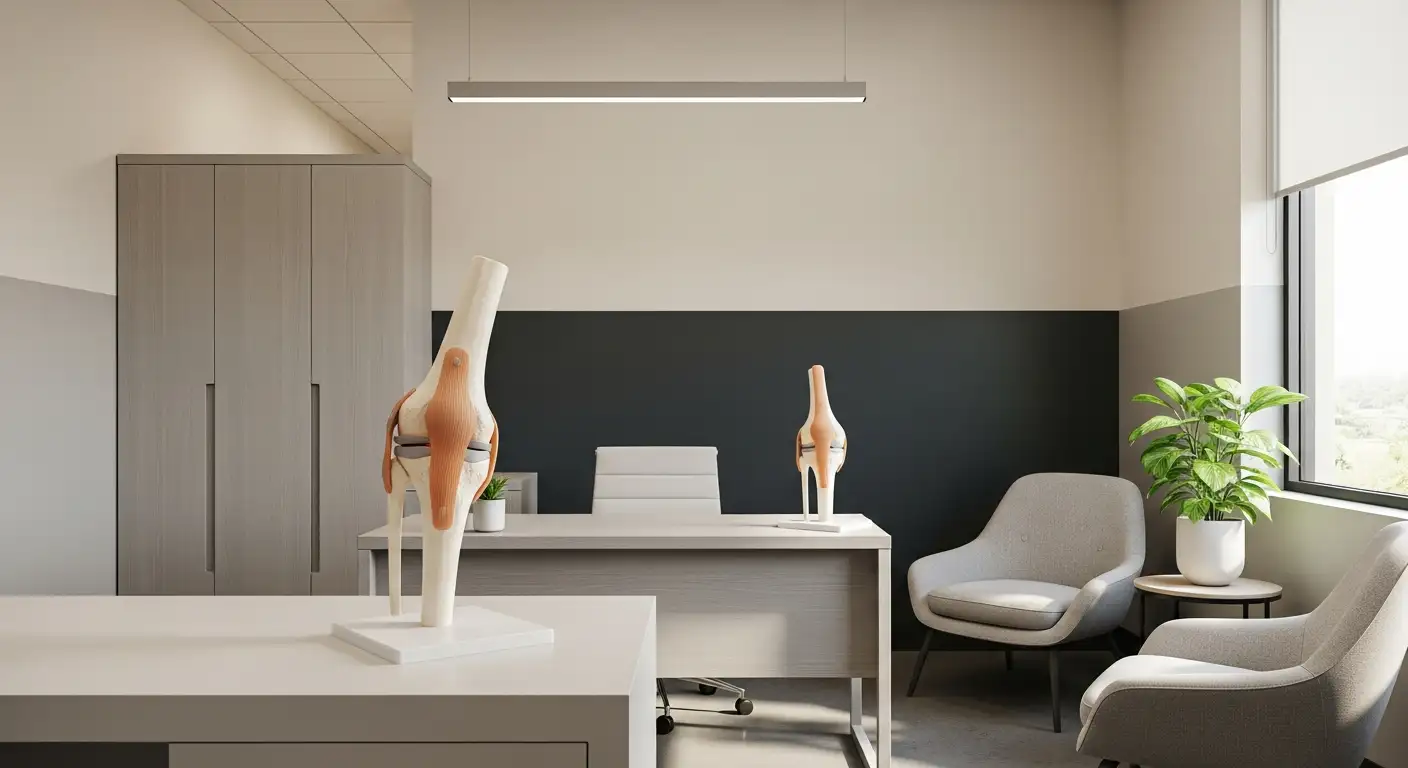Understanding Medial Knee Pain
Medial knee pain is a common condition that can affect individuals of all ages. In order to manage this condition effectively, it's crucial to understand what it is and the symptoms it presents.
Definition of Medial Knee Pain
Medial knee pain refers to the discomfort felt on the inner side of the knee. It's often a symptom of various conditions that affect the bones, ligaments, and cartilage of the knee joint. The three most common causes of medial knee pain are osteoarthritis, medial meniscus tears, and medial collateral ligament sprains.
However, medial knee pain can also be caused by other conditions such as medial collateral ligament (MCL) injuries, patellar tendonitis, bursitis, pes anserine bursitis, and even obesity [1].

Common Symptoms
The symptoms of medial knee pain can vary depending on the underlying cause. However, common signs include:
- Pain on the inner side of the knee
- Swelling or inflammation around the knee area
- Difficulty moving the knee
- Sensation of instability or weakness
- Increased pain when walking, running, or performing physical activities
It's worth noting that the severity and duration of these symptoms can vary from person to person. In some cases, medial knee pain might be a temporary issue that resolves with rest and home remedies. In others, it might be a chronic issue that requires long-term management and possibly even surgical intervention.
Understanding the causes of medial knee pain can lead to more effective treatment and management strategies. The following sections will delve into the common causes, injuries, and other conditions leading to medial knee pain.
Common Causes of Medial Knee Pain
Medial knee pain can be caused by a variety of factors, including sports injuries, overuse, osteoarthritis, and other conditions affecting the knee. Understanding the root causes of medial knee pain can help in determining the appropriate treatment plan.
Sports Injuries and Overuse
One of the most common causes of medial knee pain is sports injuries, particularly those involving a direct blow to the inside of the knee or a twisting movement that strains the medial collateral ligament (MCL) Healthline. Such injuries often occur in contact sports such as football and can result from excessive twisting or a direct impact to the knee.
Overuse injuries are another common cause of medial knee pain. These injuries typically occur in athletes who repetitively stress the knee joint, leading to conditions such as pes anserine bursitis. This condition, characterized by inflammation of the bursa located between the shinbone and the three tendons of the hamstring muscles, can be treated with rest, ice, compression, and physical therapy Healthline.
Osteoarthritis and Aging
Osteoarthritis is a common cause of medial knee pain, especially in older adults. This condition involves the breakdown of cartilage in the knee joint, which leads to pain and stiffness. The pain from osteoarthritis can be exacerbated by factors such as obesity, which puts additional pressure on the knee joint Mayo Clinic.
Conditions Affecting the Knee
Several conditions can contribute to medial knee pain. These include but are not limited to medial meniscus tears, patellar tendonitis, bursitis, and pes anserine bursitis Healthline. Conditions like bursitis, tendonitis, torn meniscus, medial plica syndrome, and osteoarthritis can also contribute to medial knee pain Mayo Clinic. Patellofemoral pain syndrome, also known as runner's knee, can lead to medial knee pain. This condition involves pain at the front of the knee and around or behind the kneecap.
Through understanding these common causes of medial knee pain, appropriate measures can be taken to manage the condition effectively and prevent further damage to the knee joint.
Injuries Leading to Medial Knee Pain
Among the myriad causes of medial knee pain, physical injuries, especially those related to sports, are quite frequent. In this section, we will delve into two common injuries that lead to medial knee pain: Medial Collateral Ligament (MCL) injuries and Medial Meniscus tears.
Medial Collateral Ligament Injuries
The Medial Collateral Ligament (MCL), located on the inside of the knee, plays a crucial role in stabilizing the joint. Unfortunately, it is also susceptible to injury, which can lead to significant medial knee pain. MCL injuries typically result from excessive twisting, or a direct impact to the knee, and are common in contact sports like football [2].
Symptoms of an MCL injury include pain on the inside of the knee, swelling, and difficulty in bending the knee. In severe cases, an MCL injury can lead to instability in the knee, making it difficult for individuals to maintain balance or put weight on the affected leg.
Medial Meniscus Tears
The Meniscus is a C-shaped piece of cartilage that acts as a cushion between the thigh bone (femur) and shin bone (tibia). The medial meniscus, located on the inside of the knee, is particularly prone to injury. A common cause of medial knee pain is a tear of the medial meniscus, which can occur acutely or as a result of degenerative changes in the knee [3].
Signs of a medial meniscus tear include pain in the knee, swelling, and a popping sensation. In some cases, individuals may also experience locking or catching of the knee.
Navigating these common injuries and understanding their symptoms can provide insight into the medial knee pain causes, aiding in early detection and appropriate treatment.
Other Conditions Causing Medial Knee Pain
While injuries are common causes of medial knee pain, several other conditions can lead to discomfort and dysfunction in the inner knee area. These conditions often result from overuse, biomechanical imbalances, or inflammation in the knee joint. This section will discuss two such conditions: Pes Anserine Bursitis and Patellofemoral Pain Syndrome.
Pes Anserine Bursitis
Pes Anserine Bursitis is a common cause of medial knee pain. It typically affects athletes who overuse the knee joint, particularly runners and cyclists, or those involved in sports that require repetitive knee flexion [4].
This condition arises from the inflammation of the bursa sac located on the inner side of the knee, leading to pain and tenderness in the area [5]. It may also cause symptoms like warmth, tenderness, and swelling in the inner knee, suggestive of knee bursitis.
Treatment for Pes Anserine Bursitis generally includes rest, ice, compression, and physical therapy. In addition, strengthening exercises for the hip abductors, such as the gluteus medius, can help control the knee's position and reduce stress on the medial knee structures, potentially alleviating pain and dysfunction [4].
Patellofemoral Pain Syndrome
Patellofemoral Pain Syndrome, also known as Medial Plica Syndrome, is another condition that can cause medial knee pain. This syndrome occurs when the plica, a fold in the knee joint's lining, becomes irritated or inflamed. The inflammation can lead to symptoms like pain, clicking, or locking of the knee.
Activities such as squatting, stair climbing, or prolonged sitting can aggravate Patellofemoral Pain Syndrome. Depending on the severity, treatment may include rest, ice, compression, physical therapy, and in some cases, surgical intervention.
These are just a few examples of the conditions that can cause medial knee pain. It's important to consult with a healthcare provider if you're experiencing persistent knee pain, as accurate diagnosis is crucial for effective treatment.
Diagnosing Medial Knee Pain
When it comes to medial knee pain, proper diagnosis is key to identifying the root causes and determining an effective treatment plan. The process of diagnosing medial knee pain typically involves a physical examination, an assessment of symptoms, and the use of imaging and diagnostic tests.
Physical Examination and Symptoms
During a physical examination, a healthcare provider will assess the individual's knee for signs of swelling, redness, or warmth. They will also examine the knee's range of motion and the strength of the surrounding muscles. In addition, the healthcare provider will ask about the individual's symptoms, including the location and severity of the pain, when the pain occurs, and any activities or movements that seem to aggravate the knee pain.
Some symptoms may point to specific medial knee pain causes. For instance, an MCL injury, common in contact sports like football, may result from excessive twisting or a direct impact to the knee. The individual may experience pain along the inner part of the knee, especially when bending it. Similarly, osteoarthritis, a condition common in older adults, involves the breakdown of cartilage in the knee joint and can cause pain, swelling, and stiffness in the knee.
Imaging and Diagnostic Tests
To confirm a diagnosis and gain a better understanding of the underlying causes, imaging tests like X-rays, MRIs, and CT scans may be utilized. These tests can provide detailed images of the knee and help identify abnormalities or injuries to the bones, cartilage, ligaments, and tendons of the knee.
For instance, an X-ray can reveal signs of osteoarthritis, such as bone spurs or narrowing of the space between bones. An MRI, on the other hand, can provide detailed images of soft tissues and can be particularly useful in diagnosing conditions like MCL injuries and meniscus tears.
In some cases, additional diagnostic tests may be needed. One such test is arthroscopy, a minimally invasive procedure where a small camera is inserted into the knee joint, allowing the healthcare provider to inspect the joint and, if necessary, perform certain treatments.
By combining physical examination findings, symptom assessment, and results from imaging and diagnostic tests, healthcare providers can accurately diagnose medial knee pain and its causes, setting the stage for a targeted and effective treatment plan. This comprehensive approach to diagnosis is crucial in managing and ultimately conquering medial knee pain [5].
Management and Treatment Options
Once the causes of medial knee pain are identified, the focus shifts to managing the discomfort and preventing future injury. Treatment options can be broadly divided into conservative, non-invasive methods and surgical interventions.
Conservative Treatments
Non-pharmacological conservative treatments, such as physical therapy interventions, are among the first methods to prevent OA progression and avoid knee surgery for patients with knee pain from osteoarthritis (OA) [7]. These interventions aim to strengthen the muscles around the knee, improve flexibility, and promote overall joint health.
One such intervention is diathermy, or heat therapy. Used for knee OA, diathermy can reduce synovial thickness and decrease pain associated with synovitis and the progression of cartilage loss. Studies have shown a range of 8% to 45% decrease in WOMAC scores for various diathermy treatments.
Surgical Treatments
Surgical interventions are generally considered when conservative treatments fail to provide relief. The specific type of surgery depends on the underlying cause of the medial knee pain and the individual's overall health and lifestyle. Surgical procedures can range from minimally invasive arthroscopic procedures to major surgeries such as total knee replacement.
It's important to note that while surgery can significantly improve quality of life for those with severe knee pain, it also carries potential risks and requires a significant recovery period. Therefore, it's essential to discuss all available treatment options with a healthcare provider to make an informed decision on managing medial knee pain.
References
[1]: https://www.mayoclinic.org/diseases-conditions/knee-pain/symptoms-causes/syc-20350849
[3]: https://www.uptodate.com/contents/knee-pain-beyond-the-basics
[4]: https://www.sportsinjuryclinic.net/sport-injuries/knee-pain/medial-knee-pain
[5]: https://www.healthline.com/health/inner-knee-pain
[6]: https://redefinehealthcare.com/inner-knee-pain-why-does-the-inside-of-my-knee-hurt/
